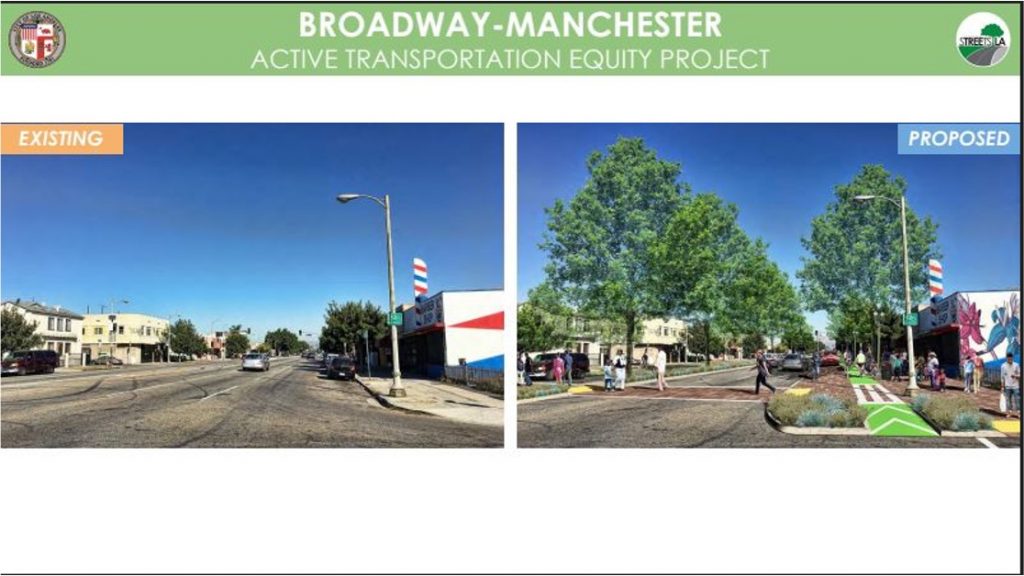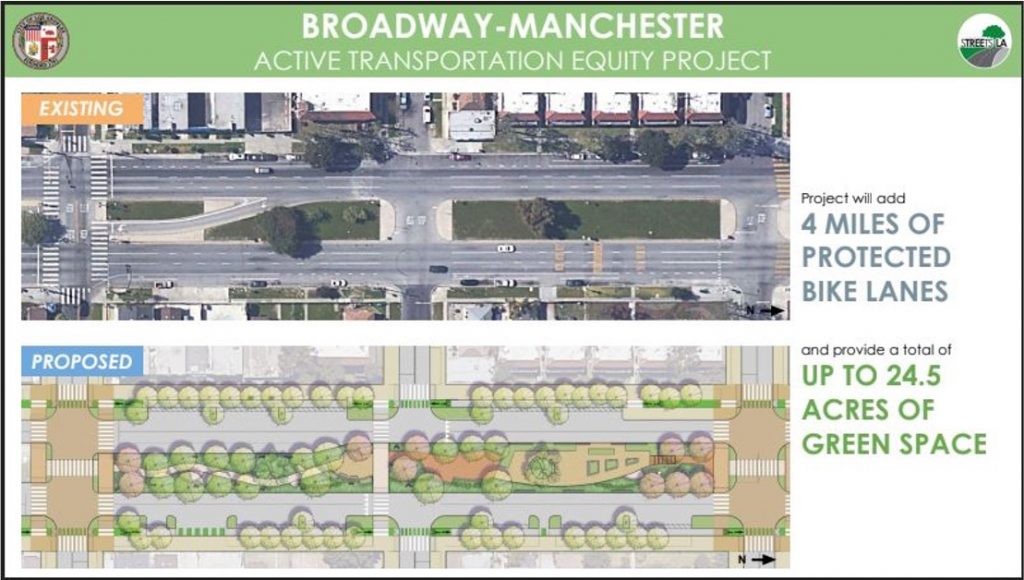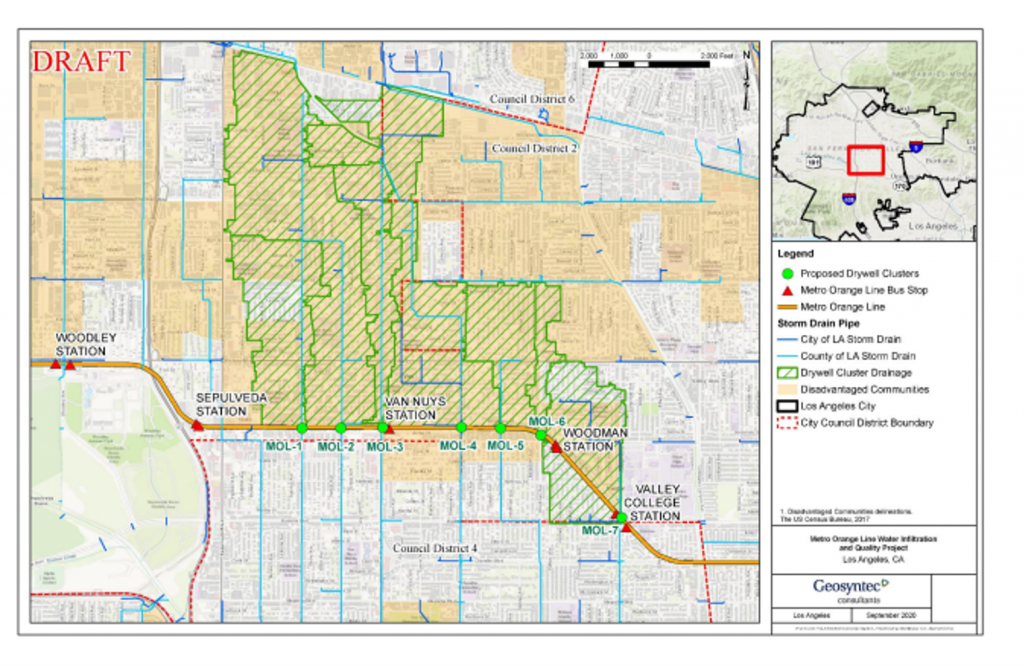
In order to create a better experience for people existing outside of cars, more green infrastructure is needed to cool down our city and make bus stops more friendly to the riders, and biking and walking options more viable in a future with even more extreme heat days. Such multi-benefit green infrastructure is good for the environment in other ways, too, such as filtering pollutants from the air, and allowing our region to capture more rainfall as part of our local water supply. In our most recent session on ‘Urban Cooling on Transit Corridors,’ thanks to the help of Heather Repenning for coordinating with EnviroMetro to organize, StreetsLA and Climate Resolve were able to showcase green infrastructure projects that can be adopted around LA Metro bus stops and transit corridors.
More street trees and bus shelters could provide a lot of relief from the heat for bus riders as they wait for the next bus. Additionally, these urban cooling improvements can also make riders feel safe as well. With solar-powered lighting, bus shelters can not only provide shade but also light during the night, helping people feel more safe from threats while waiting for the bus. Green infrastructure around bus stops can make LA Metro stops cooler, safer, and look beautiful. There’s also a lot of opportunity to integrate green infrastructure into bike and bus-only lanes, which can offer Angelenos better and cleaner transportation options while also bettering our local environment.


Besides promoting green infrastructure that makes for more pleasant experiences for riders, LA Metro is also expanding upon green infrastructure projects for the betterment of the community in a less visible, yet high-impact way. The Metro Orange Line (MOL) Water Infiltration and Quality Project (Project) proposes to implement 168 drywells across seven locations along the MOL with pretreatment facilities to capture, treat, and infiltrate stormwater runoff from 2,300 acres, resulting in an estimated groundwater recharge yield between 780 and 1,050 acre-feet/ year into the San Fernando Groundwater Basin. LA Metro’s extensive land holdings and fortuitous siting within the highest value groundwater recharge areas within the region would allow for large-scale infiltration and aquifer recharge and has the potential to capture enough stormwater to allow Metro to become net water positive.

It is encouraging to see LA Metro incorporate more green infrastructure in their projects and work, and via our engagement as co-chair of Metro Sustainability Council, we will continue to push them to expand on their efforts. As we look towards the future, it is nice to see that tax dollars can be used to accomplish multiple goals at once, as LA Metro can improve their service for riders while making the overall environment much better.
It’s been a long time coming trying to get LA Metro to incorporate more green infrastructure in its capital projects. It’s starting to feel like we’ve turned a page and are making headway developing the knowledge, know-how and motivation to make it happen.